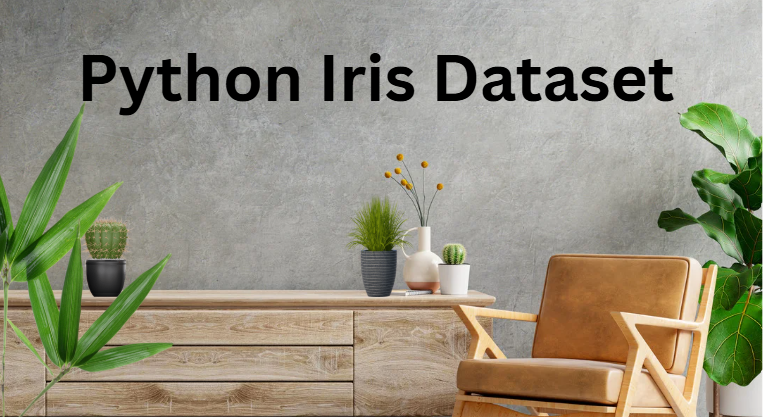The Iris dataset is one of the most famous datasets in the world of machine learning. It is simple, clean, and perfect for learning how to work with data in Python. In this article, we will explore what the Iris dataset is, how to load it, and how to use it for basic machine learning tasks.
1️⃣ What is the Iris Dataset?
The Iris dataset contains information about a flower called Iris. There are three types of Iris flowers:
- Iris Setosa
- Iris Versicolor
- Iris Virginica
The dataset includes 150 samples, and each sample has four features:
- Sepal Length
- Sepal Width
- Petal Length
- Petal Width
The goal is to use these features to identify the type of flower. This is a simple classification problem.
2️⃣ Why is the Iris Dataset Famous?
The Iris dataset is very popular because:
- ✅ It is small and easy to understand
- ✅ No missing values
- ✅ Perfect for beginners
- ✅ Great for testing machine learning models
It was introduced by Ronald Fisher in 1936 and is still used today for learning and testing algorithms.
3️⃣ How to Load the Iris Dataset in Python
The Iris dataset is available in many Python libraries. The easiest way is using Scikit-Learn.
Here is a simple example:
from sklearn.datasets import load_iris iris = load_iris() print(iris.data[:5]) print(iris.target[:5])
This code loads the dataset and prints the first 5 samples.
iris.data contains features
iris.target contains flower types (0, 1, 2)
4️⃣ Understanding the Data
Let’s quickly break down the four measurements:
Feature NameMeaningUnit (cm)Sepal LengthFlower sepal sizecmSepal WidthFlower sepal widthcmPetal LengthFlower petal sizecmPetal WidthFlower petal widthcm
Targets (labels):
TargetFlower Type0Setosa1Versicolor2Virginica
5️⃣ Visualizing the Iris Dataset
Data visualization helps us understand how features relate.
Example using a scatter plot:
This shows a scatter plot with three colors for different flower types.
6️⃣ Machine Learning with Iris Dataset
We can build a simple classification model using K-Nearest Neighbors (KNN):
from sklearn.model_selection import train_test_split from sklearn.neighbors import KNeighborsClassifier from sklearn.metrics import accuracy_score X_train, X_test, y_train, y_test = train_test_split( iris.data, iris.target, test_size=0.2 ) model = KNeighborsClassifier(n_neighbors=3) model.fit(X_train, y_train) predictions = model.predict(X_test) print(“Accuracy:”, accuracy_score(y_test, predictions))
This will predict the flower type and show accuracy.
7️⃣ Benefits of Using Iris Dataset for Learning
BenefitDescriptionEasy to understandGreat for first-time machine learning usersClean dataNo missing or wrong valuesSmall sizeFast processingAvailable everywhereIncluded in many libraries
This makes it perfect for practice.
8️⃣ Common Tasks You Can Try
Here are some beginner-level ideas:
- ✅ Plot all features using pair plots
- ✅ Train different models like SVM or Decision Tree
- ✅ Compare model accuracy
- ✅ Perform data scaling and see results
- ✅ Try classification report and confusion matrix
This helps improve your ML skills step by step!
(FAQs)
✅ What type of problem is the Iris dataset used for?
It is used for multi-class classification because there are three flower types.
✅ How many samples are in the Iris dataset?
There are 150 samples with 50 samples each for the three flower types.
✅ Do I need Pandas to use the Iris dataset?
No, not necessary. You can directly load it using Scikit-Learn, but Pandas is helpful for display.
✅ Can beginners use the Iris dataset?
Yes! It is the perfect dataset for beginners to start learning machine learning.
✅ Who created the Iris dataset?
Ronald A. Fisher, a famous statistician, introduced it in 1936.
✅ What machine learning models work with Iris dataset?
Almost all models work, such as:
- KNN
- Logistic Regression
- SVM
- Decision Tree
- Random Forest
